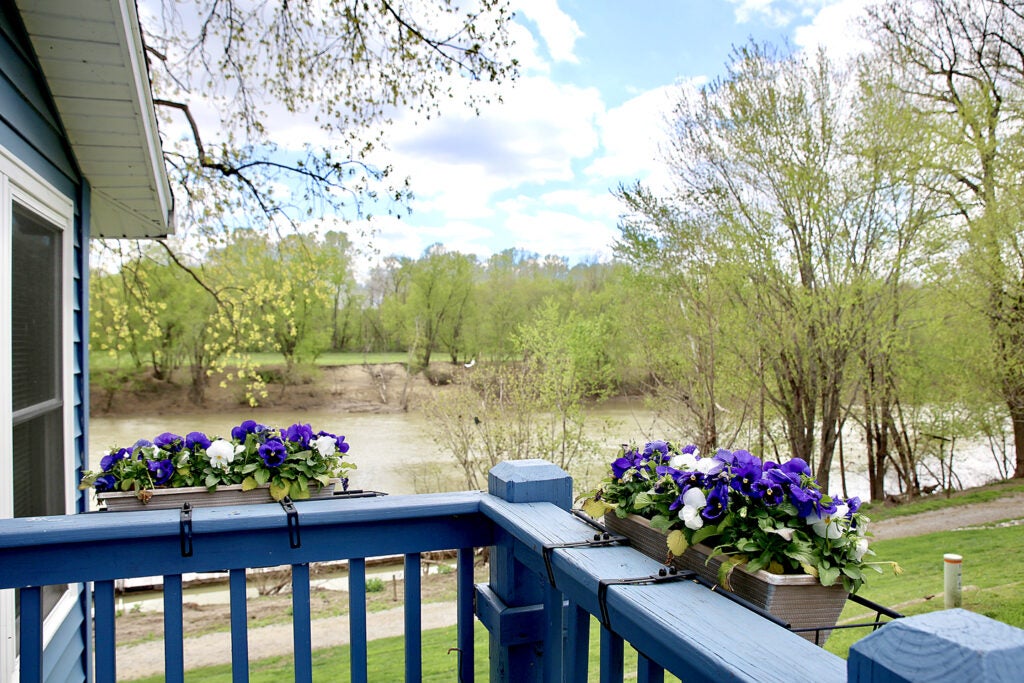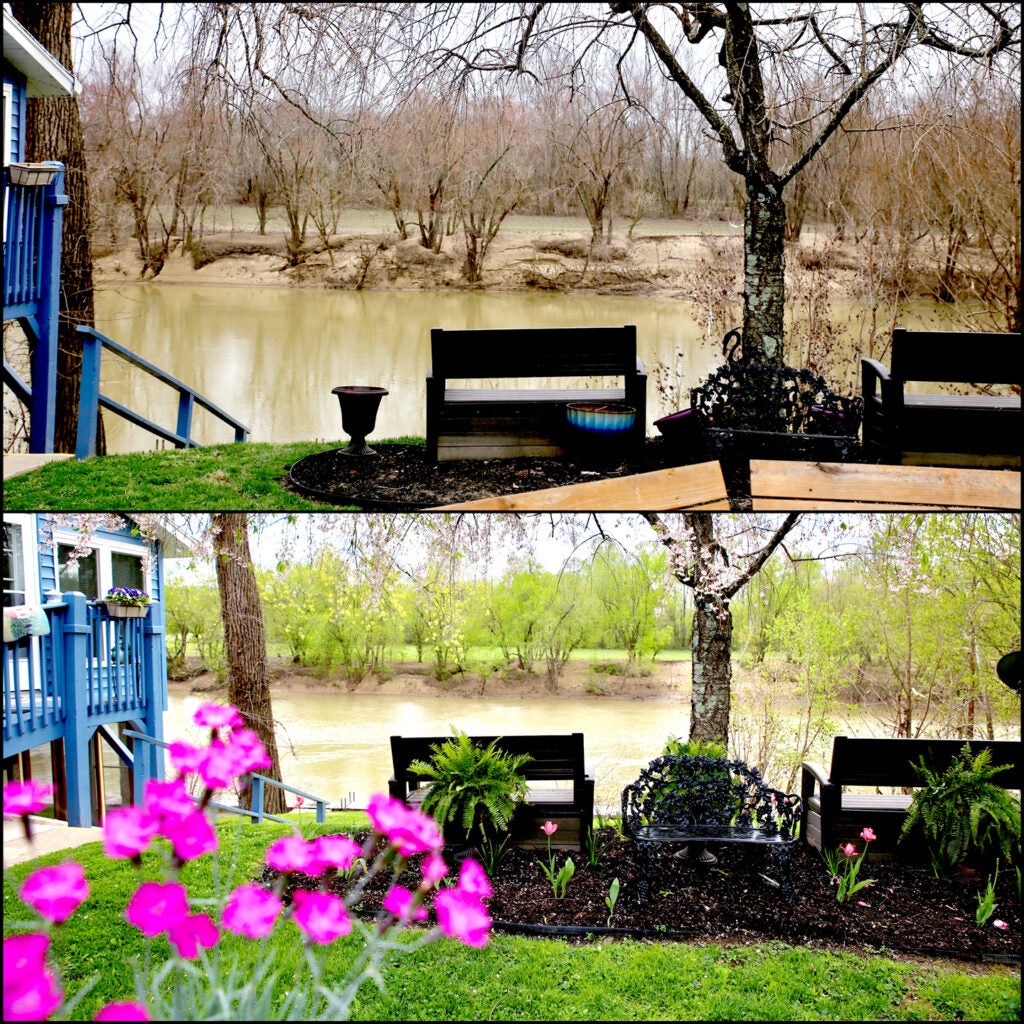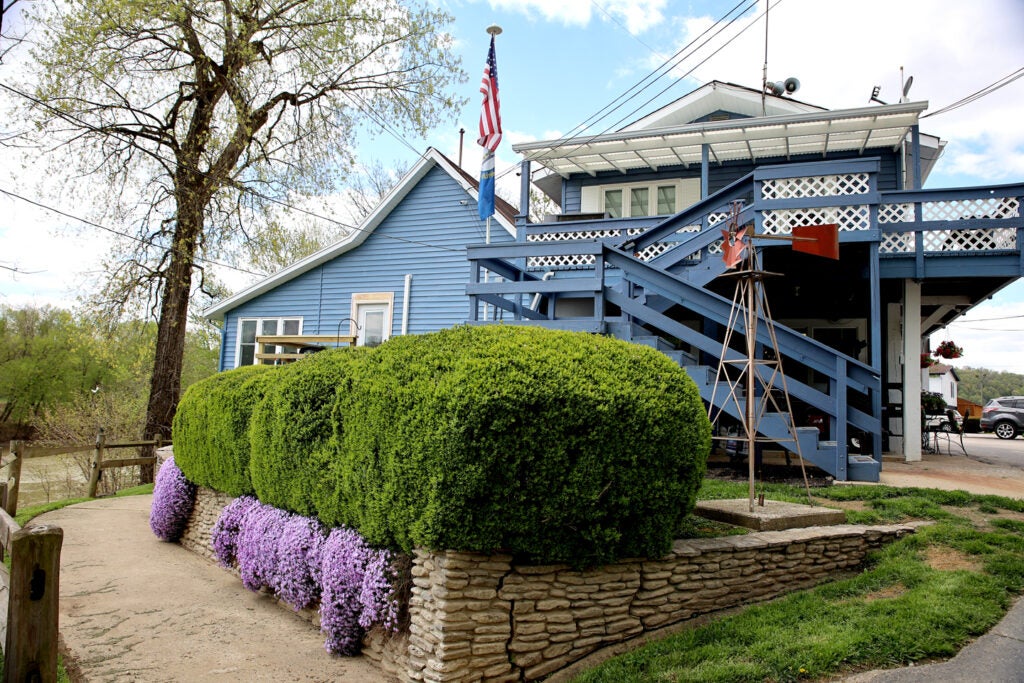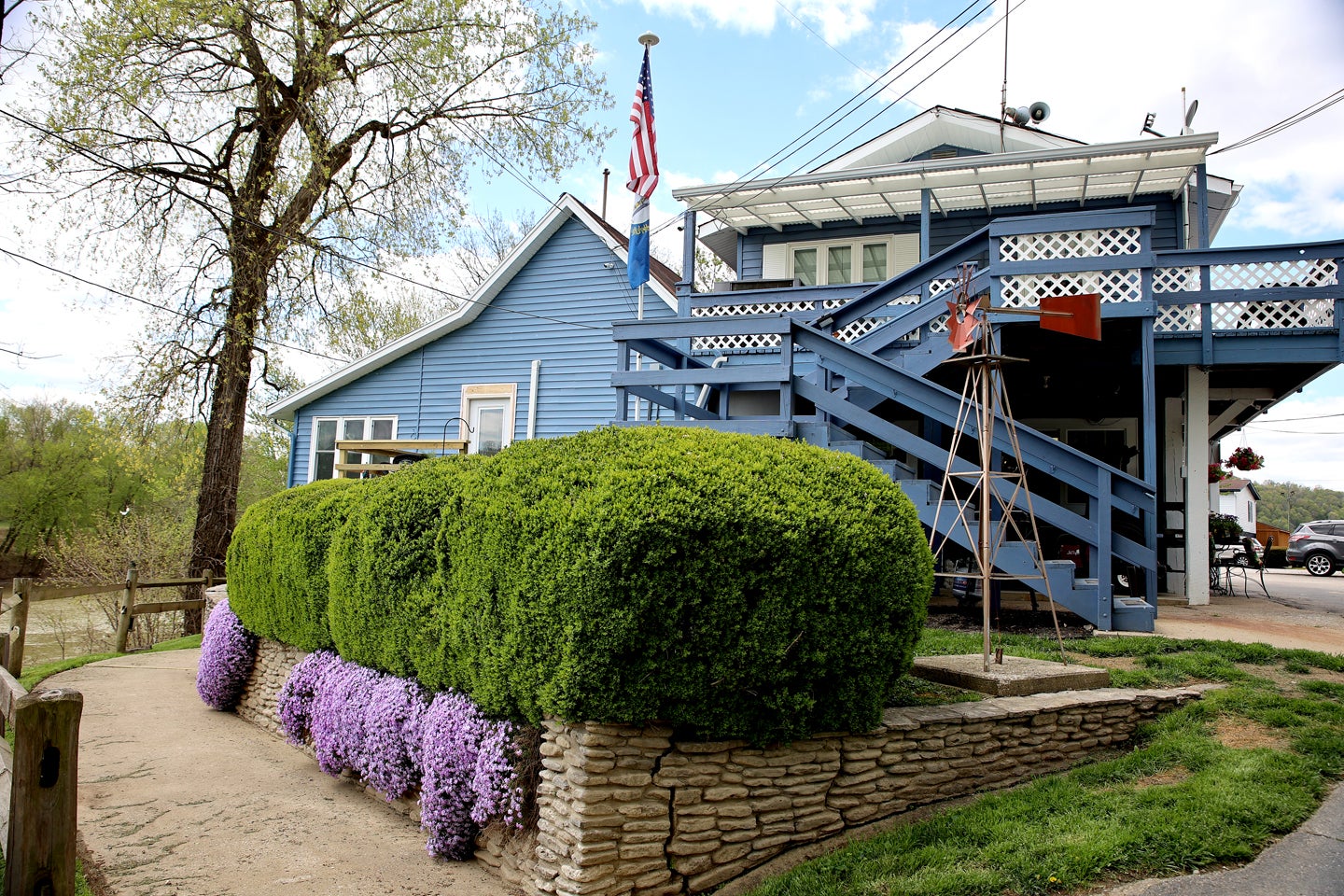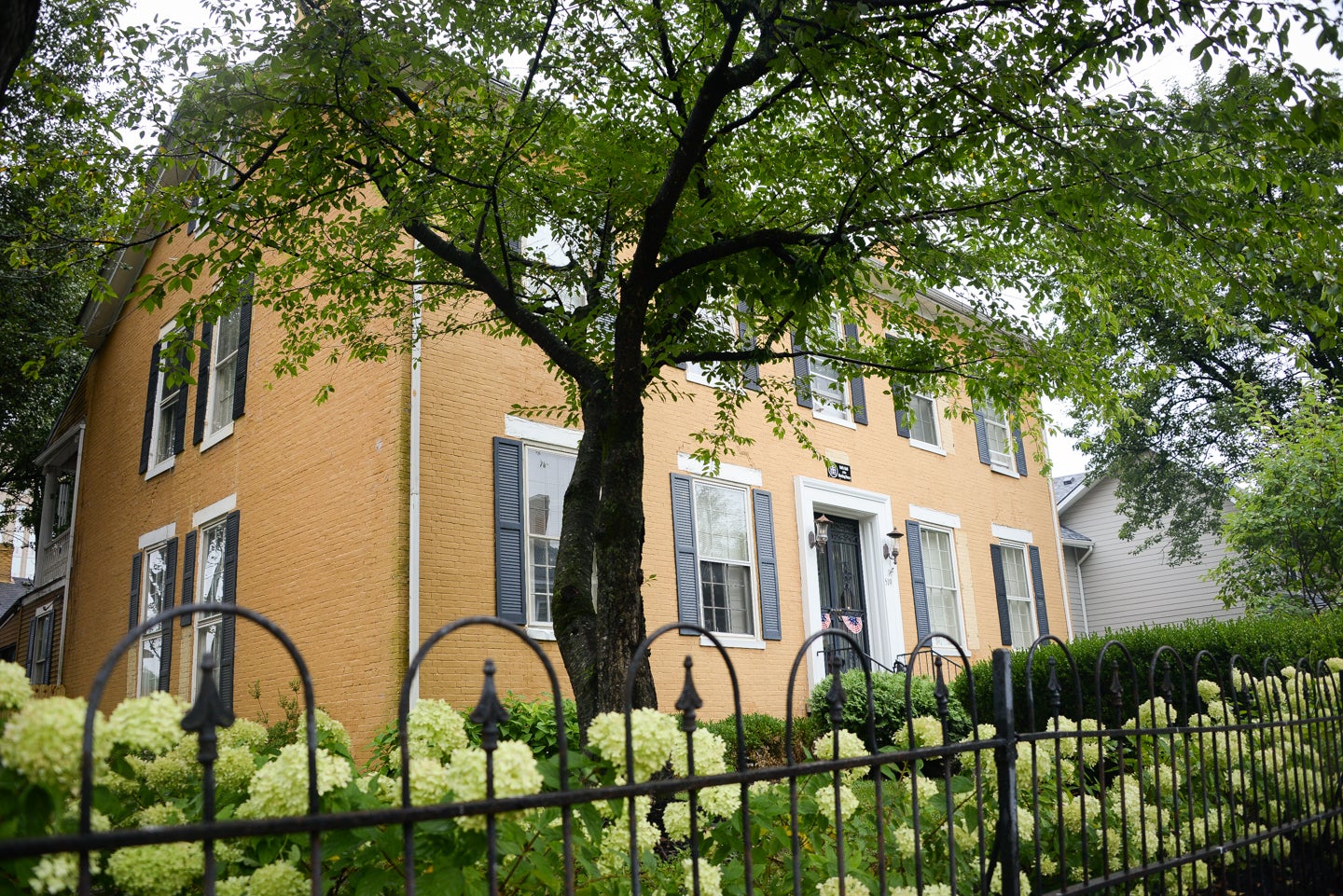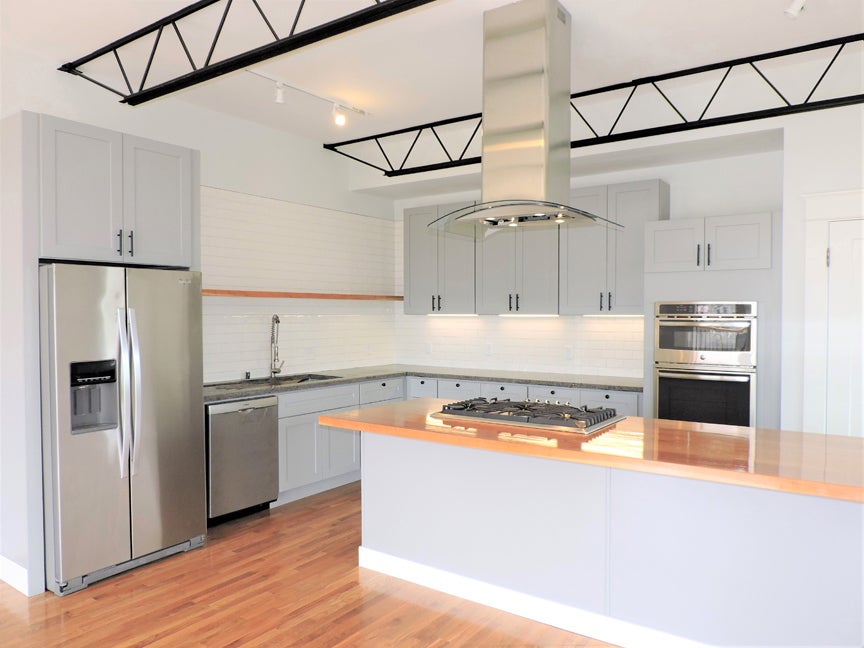It may well be that June is busting out all over, but some of us wondered how well Frankfort would recover from the March floods.
One area of concern was the Kentucky River Campground (KRC), a favorite site for campers and boaters to visit. KRC, which has been recognized in the past by the Garden Club of Frankfort for its restoration efforts after previous floods, is one of several campgrounds on the Kentucky River.
KRC is located about five miles north on U.S. 127 North. You can easily miss the sign for camping, which directs you to turn left on Steele Branch Road. As you meander down the curves to the river bottom, you will come upon the campground, which you might mistake for a mobile home park. But, this is a place where both local and out-of-state campers gather.
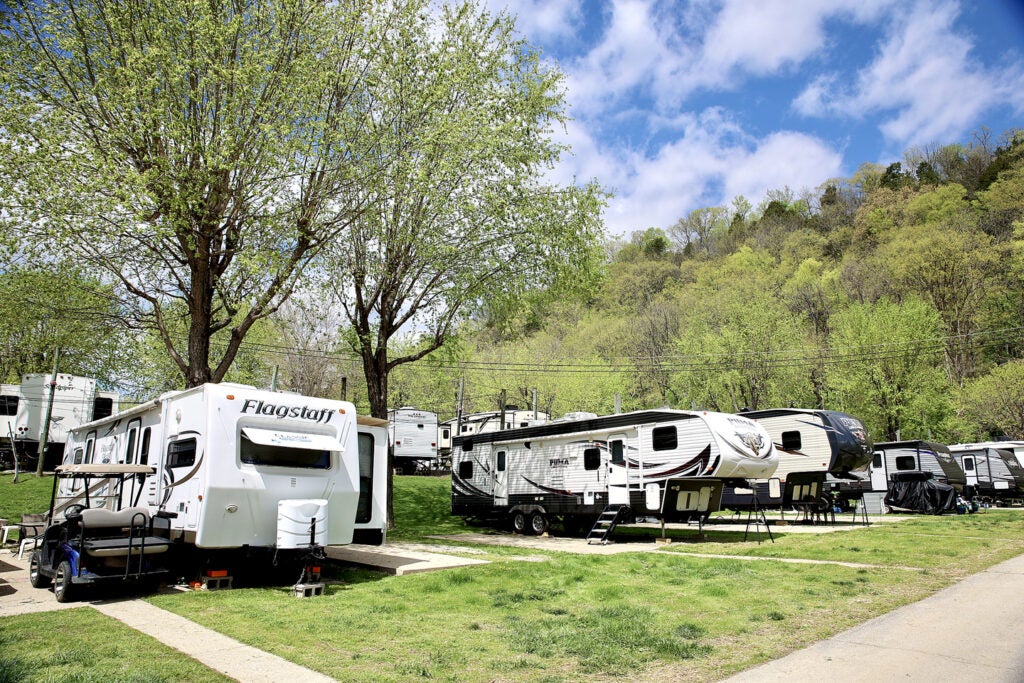
“Kentucky River Campground is an important asset among overnight accommodations in Frankfort, Frankfort / Franklin County Tourist and Convention Commission Executive Director Robin Antenucci said. “It offers a beautiful setting along the river and is close to all the attractions, shops and restaurants in our community. It is also a valuable stop along the way for Rockin’ Thunder Boat Tours, when they travel on the Kentucky River from Madison, Indiana, to Frankfort. They stop at the campground so their guests can stretch their legs and get a snack.”
The campground is also listed on the Bourbon Trail.
KRC was founded in 1976 by local resident Scott Barber and many campers have grown up spending their summers at the campground. KRC is now owned by Franklin Investment Group, which includes 50 shareholders that fund the camp.
Upon registration, Angie O’Connell, campground manager, greets visitors with a bit of southern charm.
“The moment I drove in, I got the hometown, family atmosphere” a visitor commented on the website.
Angie, along with full-time maintenance man, Russ Westerhold and part-time assistant Travis Taylor, make guests feel welcome and their stay comfortable. There are 25 rental spaces and 30 full-time residents. The campground is open during the winter and it is not unusual to have people working at Amazon or other temporary jobs stay during the winter months.
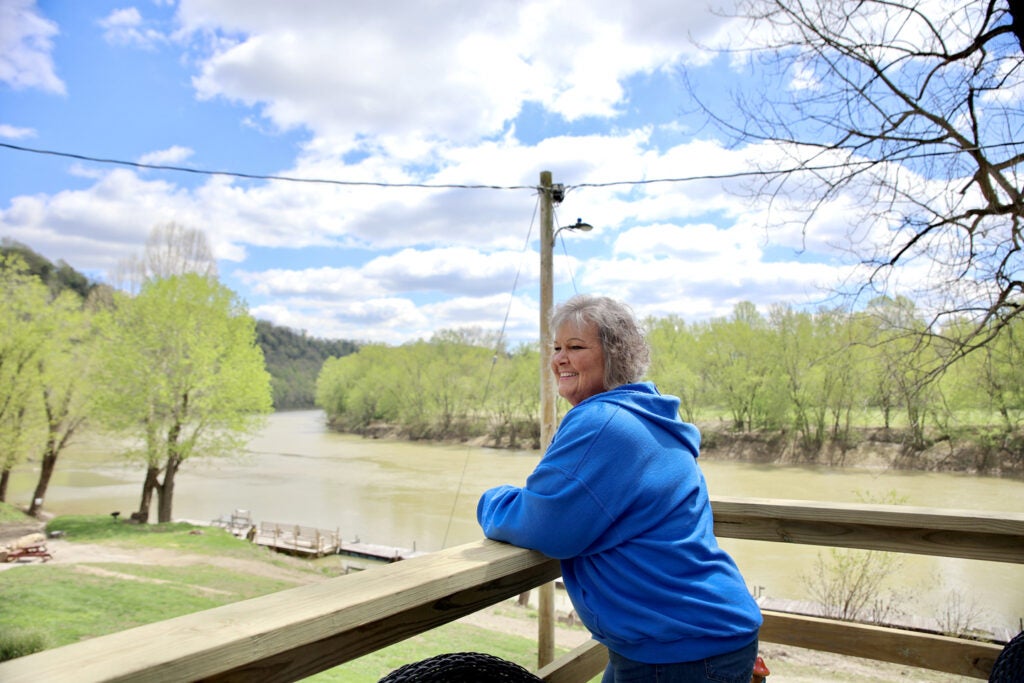
Both Angie and Russ live on the property. Angie has recently renovated the building that houses the office and her home. Russ lives in his home on the property. They both stayed in their residences during the March flood of the Kentucky River.
“The water was up to the bottom of my windows,” Angie said. “But I stayed.”
In normal times at the campground, activities are planned for both children and adults, and of course, there is the river. A protected area in the river called the “rock bar” — which allows people to swim safely — and a dock for boats is available for those who are camping.
There is a children’s playground and a pavilion used for performances and video events. The pavilion and playground were flooded in March, with only the tip top of the pavilion roof visible.
When floods threaten, Angie relies on the National Oceanic and Atmospheric Administration (NOAA) to make an emergency plan. With NOAA projections as to where flooding will occur, she usually has a two to three day warning.
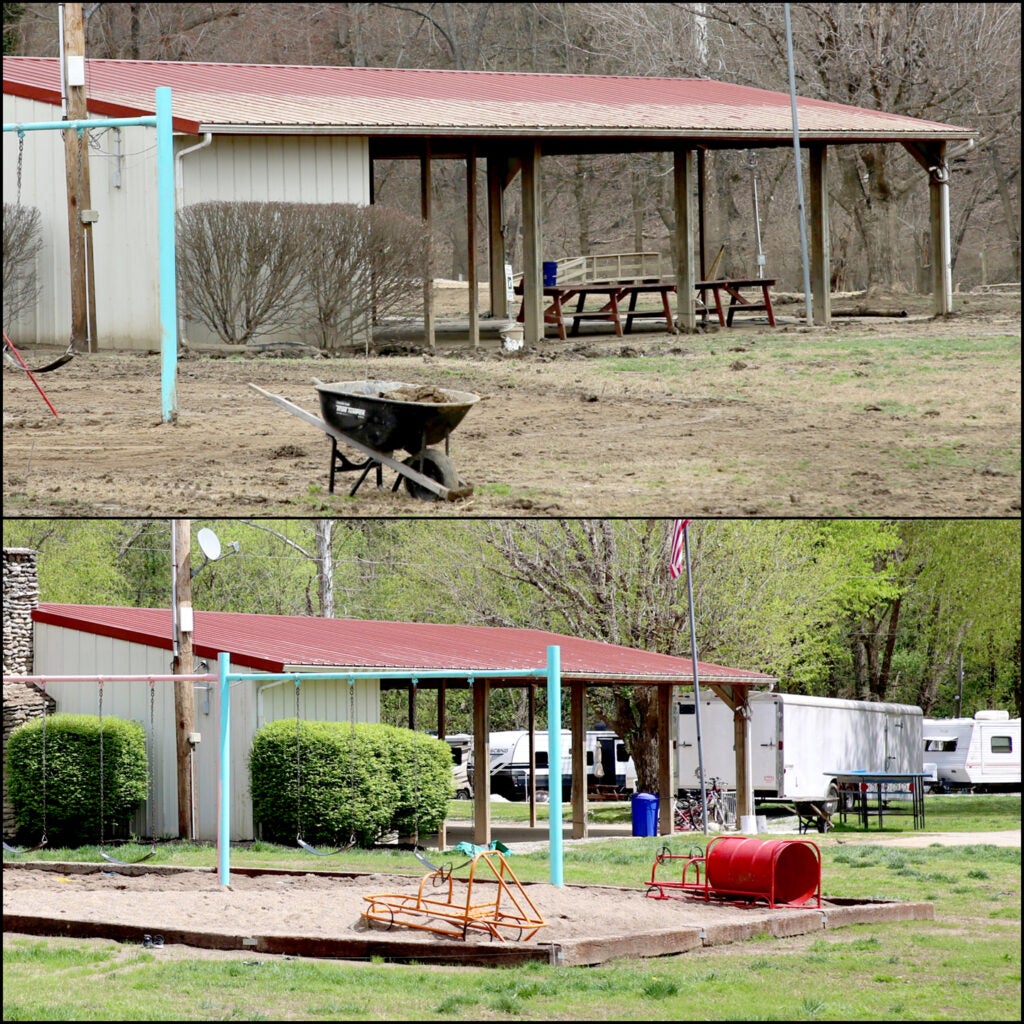
The campground has an upper and lower section, with 30 full-time residents in the upper section. When water was forecast to rise to 39 feet in March, the lower section was completely evacuated, and the residents in the upper area faced the possibility of flooding. The floods also brought mud and debris.
Asked if there is anything good about a flood, Ed Wilcox, Kentucky State University Watershed Research and Extension associate, said, “Despite the destructive qualities of floods, you usually see communities coming together to help each other get through the flood and its impacts.”
And that is what happened at KRC. Angie received a call from a resident who said she had 17 volunteers to help. Other area camps also offered help. With that assistance and money from insurance through FEMA, the campground opened to campers in late March.
The lower area of the campground had been swept clean of the slimy mud left over from the flood, and grass seed had been planted.
With the restoration efforts in place, Russ mused, “I just like to let nature take its course.”
